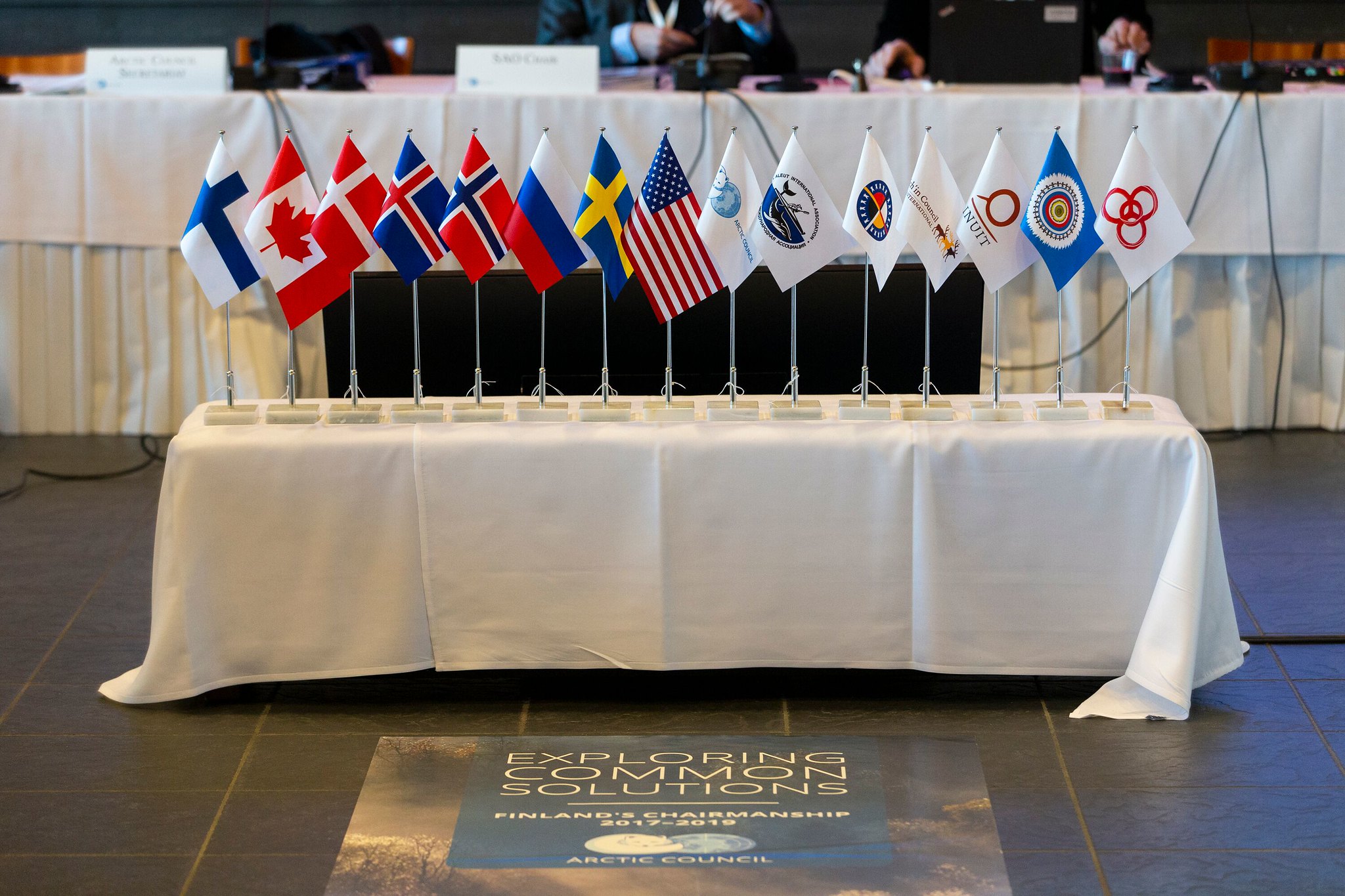Despite Russia’s post-invasion isolation, some narrow openings for Arctic cooperation remain
International Indigenous organizations offer some of the few opportunities for continued communication with Russia.

Russia comprises half of the world’s Arctic region, so how can Arctic cooperation proceed without Russia? And for Alaska, which shares bodies of water, marine ecosystems, animal populations, cultures and, in some cases, language and even family ties across the Bering Strait, how can those shared resources and interests be protected when communication with Russian neighbors has been nearly silenced?
With Russia in diplomatic isolation following its invasion of Ukraine, those questions were raised over the full three days of the Arctic Encounter Symposium that ended on Friday. The Anchorage conference attracted nearly 1,000 participants from 25 countries, including all of the Arctic nations — except for Russia.
The consequences of Russia’s invasion of Ukraine have included a halt to important joint research and resource management across the Bering Strait, said Sen. Lisa Murkowski.
“We do worry about the lack of progress that we may see as a consequence of Russia’s activities, perpetuating this war in Ukraine,” she said at a Friday afternoon news conference.
However, that setback appears to be unavoidable for now, she said.
“We cannot ignore the atrocities that we’re seeing coming from Russia to the people of Ukraine. And so if science has to be set back and monitoring is set back, that is disappointing. But we cannot engage as if there is not a war that has been perpetrated by Russia, an invasion by Russia,” she said.
There is still work happening through the Arctic Council among the seven Arctic nations that have excluded Russia from their activities, noted Murkowski and Deputy Assistant Secretary of State Douglas Jones, a Biden administration official involved in Arctic policy.
Also still doing work across borders are the Arctic Council’s permanent participants, the six Indigenous organizations with decision-making status. Of the six, one is made up entirely of Indigenous Russians, and three others, representing Inuit, Sami and Aleut peoples, have Russian members, Jones noted.
Alaska Native representatives at the Arctic Encounter Symposium said the international Indigenous organizations offer opportunities for continued communication with Russian counterparts, and possibly an avenue for protection.
“We’re getting mixed messages about what’s going on with the Indigenous peoples over there. For instance, the official voice that we’re hearing is, ‘Everything’s fine with Indigenous people.’ Yet on the back channels we hear that it’s not so fine,” said Gary Harrison, chief of Alaska’s Chickaloon Native Village and a member of the Arctic Athabaskan Council.
As an example, he mentioned the two Indigenous Russians who sailed from Chukotka to Alaska’s St. Lawrence Island in October to avoid being compelled to fight in Ukraine.
Continued communication could be a safeguard for those across the Bering Strait, Harrison said during a panel discussion on Thursday. “As long as we’re having conversations with them, things may not be getting as bad as they could be,” he said.
For the U.S. Coast Guard, some lines of communication are still open with Russians when it comes to protecting the people and natural resources in the marine waters on either side of the strait, said Rear Admiral Nathan Moore.
Longstanding agreements on cooperation and responding to emergencies remain in effect, said Moore, who commands the Coast Guard’s Alaska division.
“Nothing has changed from the sense that we do have the ability today to talk to our counterparts in the Russian Border Guard for any emergency ship incidents,” he said. That goes for fisheries enforcement, potential search and rescues and possible pollution responses, he said.
“We have a good track record of cooperating and working in that area. We can still talk to the Russians, and we do that on occasion,” he said. “You have to be able to speak to your neighbor, your next-door neighbor. You don’t have to be best friends with them, but you’ve got to be able to speak with them for shared interests across what is the natural physical border directly with Russia here in Alaska.”
However, a long-planned on-the-water spill exercise that will take place near the Russia-Alaska maritime border this summer will be a one-nation operation, Moore said. “We’ll just do our us-only version of it,” he said.
Details about the planned summer spill exercise, to take place this summer in the Bering Strait, were shared during a March 22 online presentation organized by the University of Alaska Fairbanks’ Nome campus as part of its regular Strait Science series.
Mark Everett, who heads the preparedness branch for the Coast Guard’s Alaska district, said the exercise is planned for June and envisions a spill of 5,000 metric tons of oil flowing from Russia’s Big Diomede Island to Alaska’s Little Diomede Island, continuing eastward to the northern Seward Peninsula.
The scenario was explicitly planned by himself and his Russian counterpart — prior to the Ukraine invasion — as a Russia-based spill scenario that would affect Alaska, Everett said in the Strait Science presentation.
“This was designed as a joint exercise where the Russians would have their fleet on one side, we would have ours on another side, and we’d be talking back and forth. Unfortunately, that just isn’t going to happen,” he said.
This story was first published by Alaska Beacon and is republished here under a Creative Commons license. You can read the original here.
This article has been fact-checked by Arctic Today and Polar Research and Policy Initiative, with the support of the EMIF managed by the Calouste Gulbenkian Foundation.
Disclaimer: The sole responsibility for any content supported by the European Media and Information Fund lies with the author(s) and it may not necessarily reflect the positions of the EMIF and the Fund Partners, the Calouste Gulbenkian Foundation and the European University Institute.
